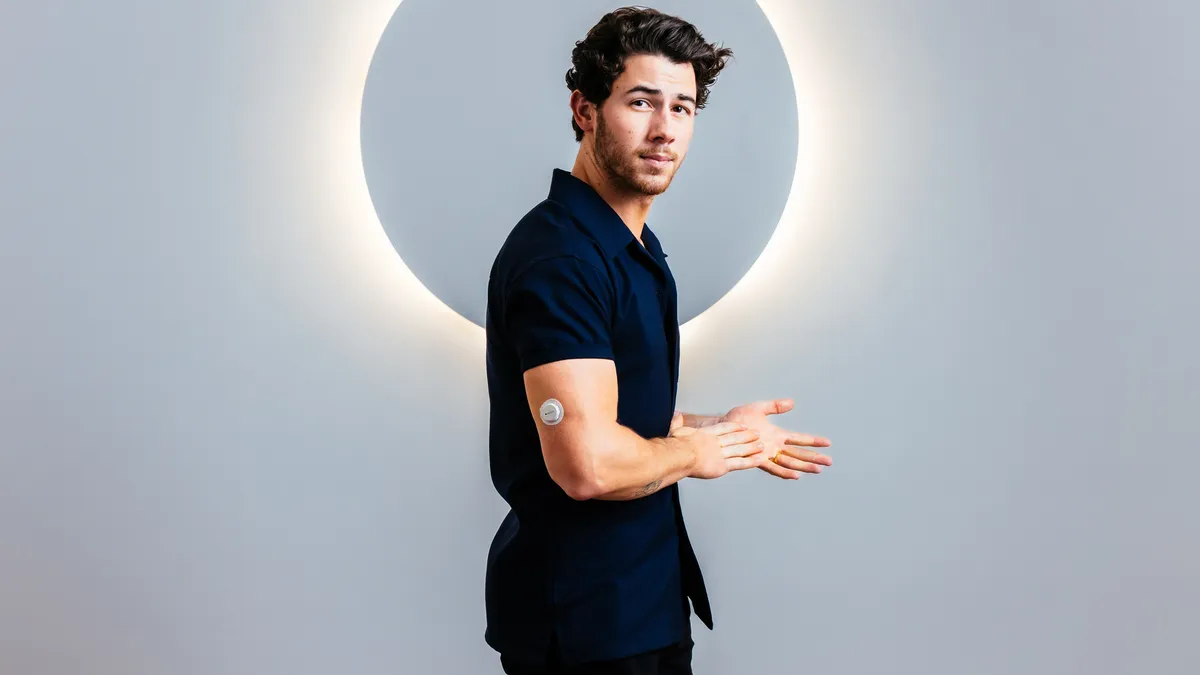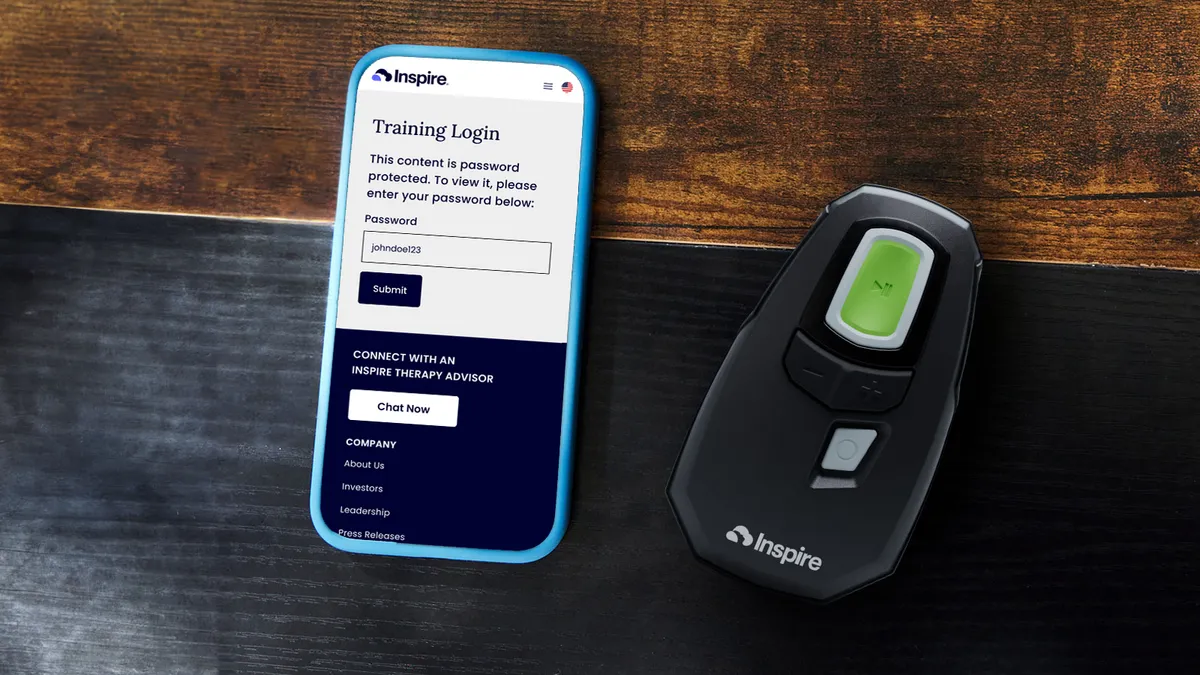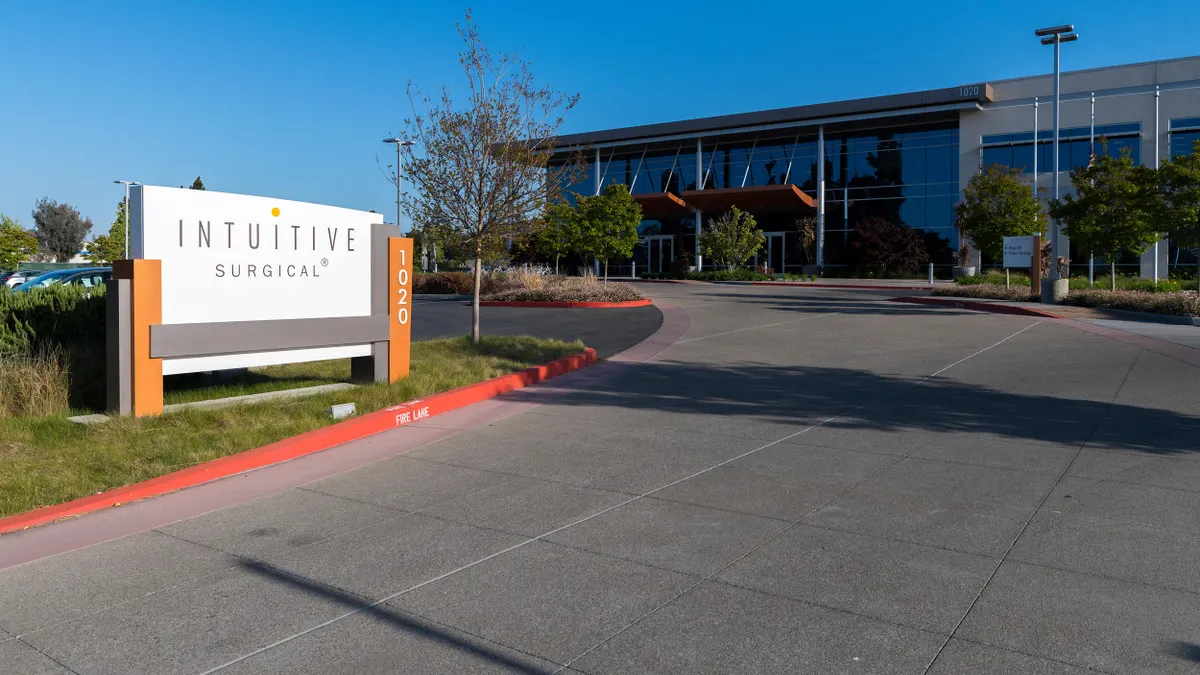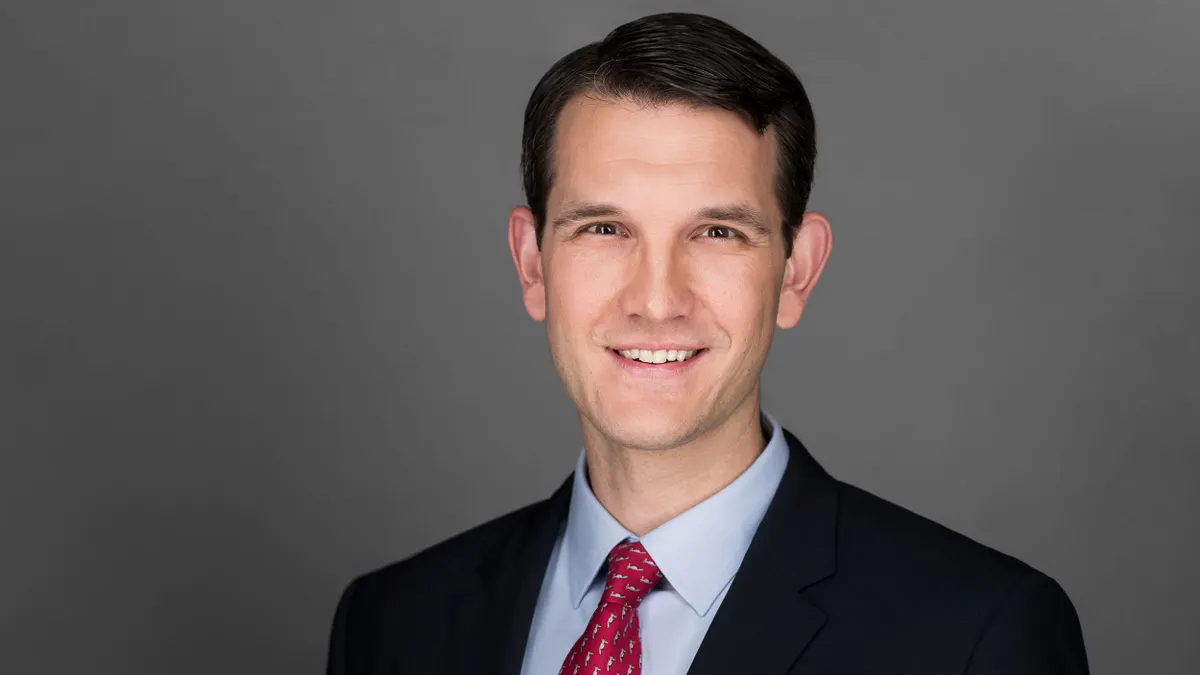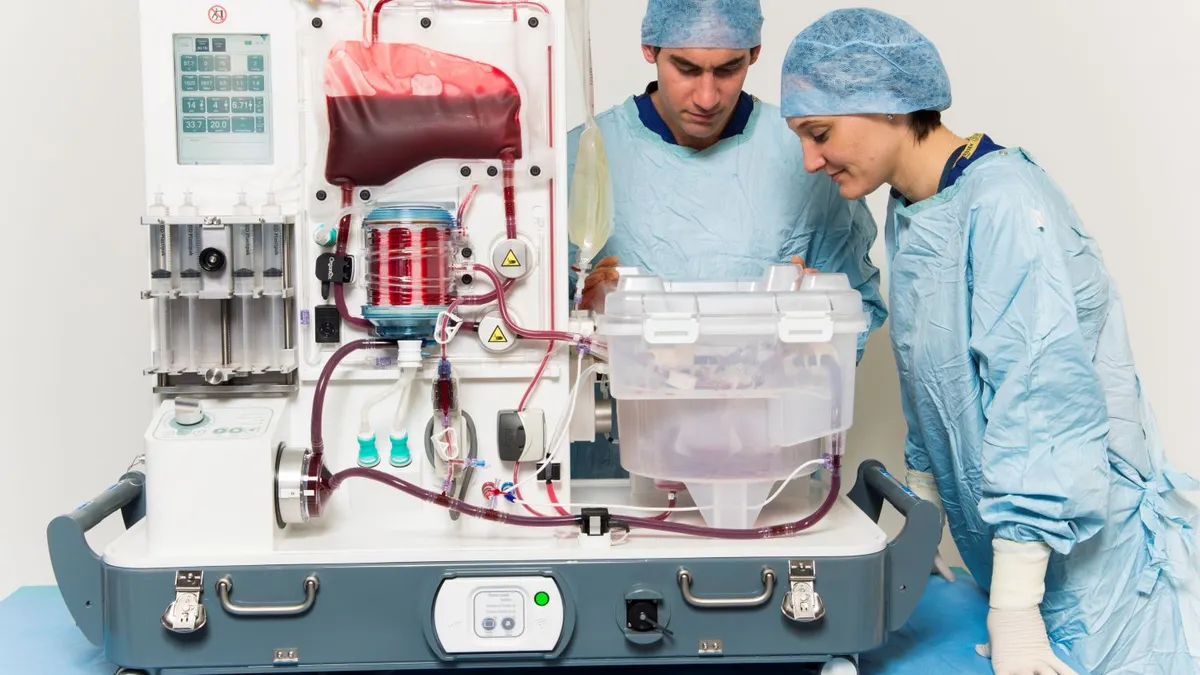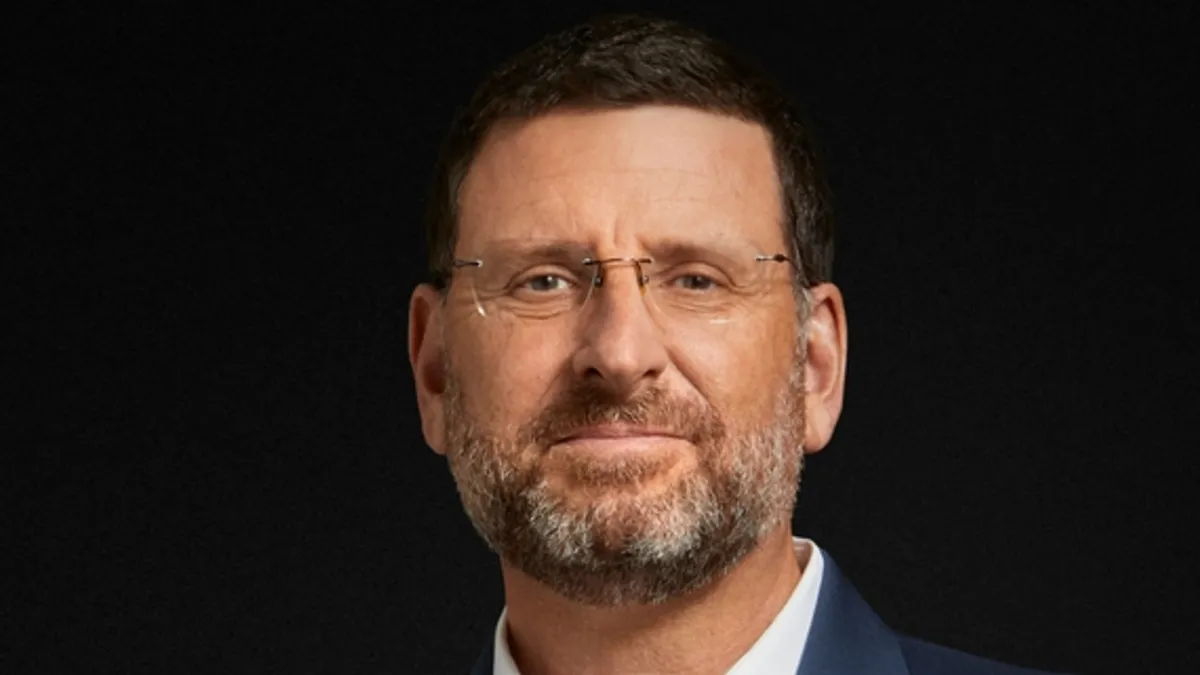Editor’s note: This article is the first in a series on the market for continuous glucose monitors. Read the second story here.
In Dexcom’s latest Super Bowl spot, singer Nick Jonas flips a coin-sized glucose monitor into the air.
“This small thing is the next big thing,” he said in the ad, which aired in February.
The wearable devices, which replace fingersticks for people with diabetes to monitor their blood sugar, are expected to increase in sales as more insurers pay for them. In April, Medicare expanded coverage of the devices for more people with Type 2 diabetes, a decision that “represented the largest single expansion of access to CGM in our industry's history,” Dexcom CEO Kevin Sayer said in an earnings call that month.
Chicago-based Abbott Laboratories and San Diego-based Dexcom, which are the top two sellers of continuous glucose monitors, are competing for their slice of the global market for diabetes technology. That battle has moved onto people’s TV screens, into magazine ads, and online, as both companies seek to reach millions more potential customers.

A growing market
Currently, CGMs make up a $4 billion market in the U.S., said Margaret Kaczor, an analyst with William Blair. That market could expand to $10 billion in 2025, assuming more people with Type 2 diabetes who take daily injections of long-acting basal insulin or who don’t take insulin at all start wearing the devices, according to a July 27 report by Kaczor’s firm.
To get there, medical device companies are taking a similar approach to the pharma ads that tell patients to ask their doctors for a prescription.
“You can spend a lot of money and you could drive a lot of awareness, and I think that's what they're really trying to do,” Kaczor said in an interview.
About two million people in the U.S. have Type 1 diabetes, and another roughly 2 million people have Type 2 diabetes and are intensive insulin users, meaning they take multiple daily shots of insulin, Kaczor said.
Another 3 million people with Type 2 diabetes take basal insulin. Medicare recently started covering the devices for this group of patients, and commercial insurers are expected to follow. Medicare also started covering the devices for people who don’t take insulin but have a history of hypoglycemia.
“Continuous glucose monitors have been a game-changer for people with Type 1 diabetes and they are now the standard of care for people with diabetes,” Aaron Turner-Phifer, senior director of Health Policy for diabetes research nonprofit JDRF, wrote in an email. “We are encouraged by Medicare’s rule change that eases the pathway for people with diabetes to access these devices.”
By 2050, researchers estimate that more than 1 billion people globally could have diabetes.
Abbott CEO Robert Ford said in an April investor call that the short-term opportunity is “about $1 billion-plus,” adding that as CMS reimbursement starts to play out, “there will be eventually a spill-on onto private payers here in the U.S.”
The company hopes to grow sales of its FreeStyle Libre CGM to $10 billion by 2028, with the expanded Type 2 coverage contributing to that goal. In the second quarter, the company reported FreeStyle Libre sales of $1.3 billion.
“I don't think it's just a U.S. situation. We're seeing other countries around the world also start to expand reimbursement,” Ford said.
Dexcom hasn’t spelled out the exact amount it will get from the coverage decision, but the company expects revenue growth of 20% to 22% this year, according to an earnings forecast shared in July.
The company also plans to debut a new CGM next year focused on the 25 million people in the U.S. with Type 2 diabetes who do not currently take insulin.
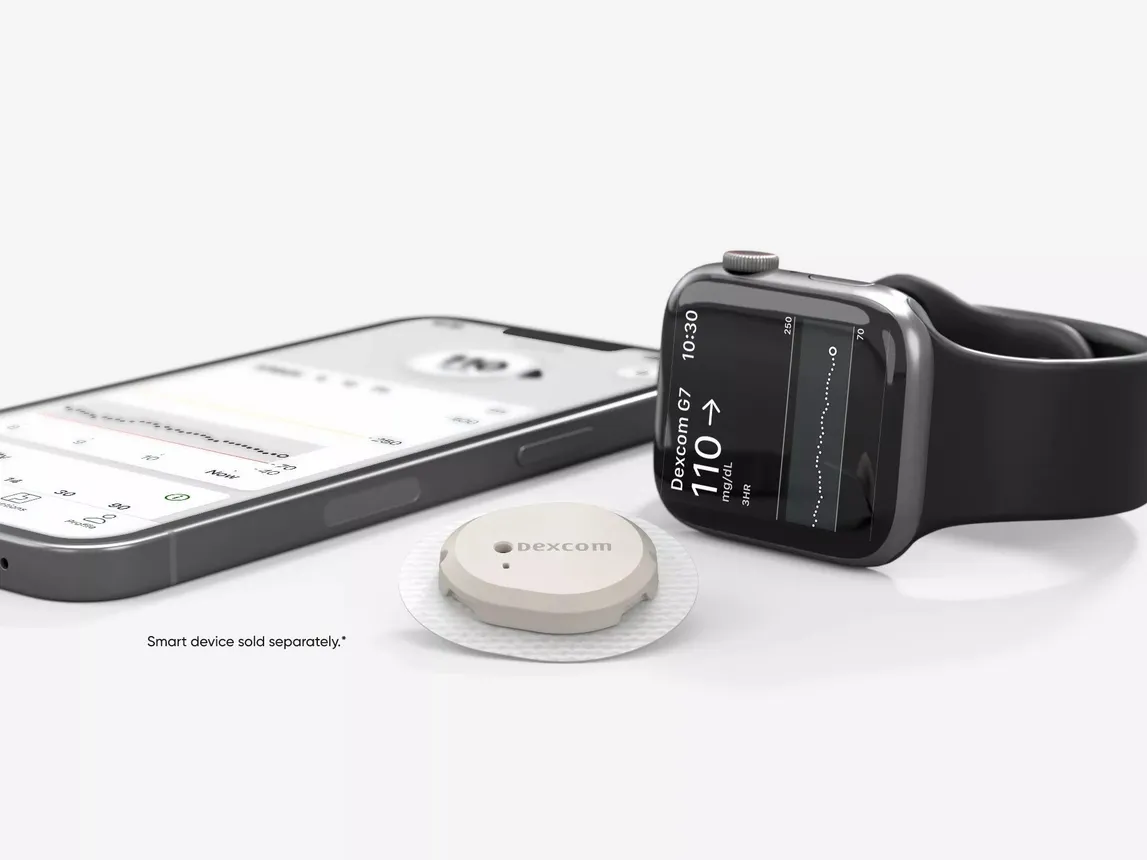
A page from pharma
Dexcom’s Super Bowl ad is “a page from pharma: Ask your doctor about…” Joe Hage, founder of medical device marketing consultancy Medical Marcom, wrote in an email. “Painless diabetes management has been around for at least a decade. It takes a long time to change behavior. B2C is hitting its stride.”
Ads for medical device companies historically haven’t been as prolific as their pharmaceutical counterparts. Device-makers have had three total Super Bowl spots, all recent: Dexcom’s two ads in 2021 and 2023, and a Hologic ad featuring singer Mary J. Blige in 2022.
“Medtech, frankly, has underspent on DTC marketing,” William Blair’s Kaczor said.
“That's been shifting, certainly, more recently,” she added. “I think what's happening is there are a lot of these devices now that can really apply to a broad group of people.”
Part of the strategy behind these ads is that as Dexcom and Abbott cast a wider net, they’re targeting more patients who are seen by primary care physicians, not just endocrinologists. Where there might just be 8,000 or 9,000 endocrinologists in the U.S., there are more than 200,000 primary care physicians, Kaczor said.
In the past, Dexcom’s marketing messages were largely directed at endocrinologists “because we felt that if the endocrinologist told patients with diabetes what to do, we would get access to them,” Sayer said in an interview.
“We realized this technology was bigger than that, and we needed to get to the user,” he added. “We started directing media more toward the end user rather than the prescriber as a customer.”
BTIG analyst Marie Thibault said the Super Bowl ad was “brilliant timing” because it coincided with the launch of Dexcom’s newest device, the G7, and came just two months ahead of the expanded Medicare coverage.
“Those two together, I think that makes the cost of a Super Bowl ad well worth it, because you're raising awareness right at the time,” Thibault said in an interview.
Sayer declined to share how much Dexcom spent on the ad, but said that it was “worth the money” and that the company had added more than 800,000 users since the company aired its last spot in 2021. A 30-second Super Bowl spot cost up to $7 million in 2023, according to the Associated Press.
The CEO said policy and awareness were the main reason to do the ad, but for shorter-term metrics, such as website traffic and leads, the “payback is more than there.”
Abbott, while it hasn’t bought into the Big Game, has also aired TV commercials, social media spots and magazines ads, Thibault said.
“To raise awareness, you have to be willing to spend on getting the consumers’ attention in the channels they're used to,” she said. “I think Abbott, as a consumer health company, is pretty aware of that.”
Battle for market share
Currently, Dexcom has a larger market share in the U.S. among people with Type 1 diabetes, while Abbott has a leading share among people with Type 2 diabetes. That’s in part because Abbott has been selling to people on basal insulin for years through its cash-pay program, while Dexcom “is starting from zero” in this group of patients, J.P. Morgan analyst Robbie Marcus wrote in a research note on June 1.
According to a survey of 50 physicians done by J.P. Morgan, more of them planned to prescribe Dexcom’s CGMs to Type 2 basal insulin patients than Abbott’s Libre, though Abbott is still expected to make up more than half of prescriptions in 2024, Marcus wrote.
“We’re firm believers that both Dexcom and Abbott can be winners at the same time – the global CGM opportunity is large enough that success isn’t mutually exclusive,” he added.
Both companies could face a broader market shift in the future, as adoption is expected to continue to grow among people with Type 1 and Type 2 diabetes.
By 2030, UBS Securities expects 83% of people with Type 1 diabetes will use a CGM, and 30% people with Type 2 diabetes, according to a research note published in March. Among people who take multiple daily shots of insulin, there’s still room for growth, but adoption will be more limited than in the last five years, the analysts said.
“Given where we are in the adoption curve, this market is more of a share battle than the largely greenfield opportunities in the non-insulin-intensive patient population,” they wrote.
By 2030, the analysts estimate that more than half of people with Type 2 diabetes taking basal insulin will use a CGM, and they see an even bigger long-term opportunity for the estimated 21 million people with Type 2 diabetes who don’t take insulin.
“It’s important that we reach these people directly and that they understand our message,” Dexcom’s Sayer said.


